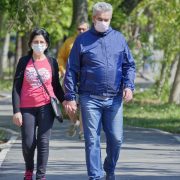3 Tips to Decrease Stress around the Holidays
The Holidays are fast approaching and although this is meant to be a joyous time of year – Holiday Stress can sometimes get the best of you.
Why is stress so harmful?
Besides the obvious mental toll that increased stress levels tend to cause, it also has an impact on virtually all systems of your body. Prolonged, unhealthy stress puts your nervous systems on high alert – otherwise known as “fight or flight”.
If not regulated, this can lead to problems such as high blood pressure, shortness of breath, unwanted muscle tension, increased cortisol production, an unhappy gut, and more neck and back pain. The good news is that there are some easy, practical ways to combat the stress of Holidays all on your own.
Here are three of my favorite tips for decreasing stress around the Holidays (or any time of year).
1. Breathe Intentionally
Breathing is one of your best friends when it comes to quickly reducing and interrupting holiday stress. As little as 30 seconds can have dramatic effects.
When you breathe deeply it sends a message to your brain to calm down and relax. The best part is you can do this anywhere — in the car, at the office, while shopping, or in the bathroom. Although breathing may not eliminate stress permanently, it does interrupt it. And interruption is key when it comes to managing stress — both emotional and musculoskeletal.
When you interrupt the ability for the forces of stress to accumulate, you decrease the overall toll it can have on both your body and brain.
2. Practice Gratitude
Did you know that gratitude helps lower cortisol levels in our bodies by about 23 percent?
Prolonged stress causes elevated cortisol levels, which causes lots of different health problems such as heart disease and high blood pressure. Research shows that when we think about something we appreciate (i.e. practice gratitude), the parasympathetic nervous system (the calming one) is triggered.
Our parasympathetic nervous system is responsible for returning the body to its automatic and natural rhythm. So when the parasympathetic nervous system is activated, your heart rate and cortisol levels lower. Your sympathetic and parasympathetic nervous systems can’t both be “in charge” simultaneously – so when you consciously practice gratitude – you actively lower your stress.
3. Get Moving
Any kind of movement is going to help you control holiday stress for a few reasons…
First, it gets your blood flowing which contains endorphins — natural chemicals of the body designed to decrease pain and stress.
Second, movement helps to end the “flight or fight” response of your body.
In ancient times, our fight or flight response protected us from danger (like a lion chasing us), by triggering us to run away. Running away (movement) would signal the end of the fight or flight stress cycle by letting the brain know we were safe and out of danger. In our modern world, triggers of stress are not as obvious as a lion trying to eat us, but they still activate the same ancient systems.
In current times, the end of the stress cycle is not always as clear as the final escape from a lion, therefore, it can become prolonged and chronic. Purposeful movement can help decrease stress by physiologically inducing an end to your body’s fight or flight response.
Something as simple as fast walking can do the trick. But even jumping jacks or dancing in your living room can feel good and get your heart rate up enough to end the fight or flight cycle
If you’re feeling stressed this time of year – I hope these tips help. A little bit of stress is normal – but chronic, unregulated stress is not. Give these easy and practical tips a try and see how you do. If they don’t help, then please seek out a professional to talk to.
Cheers to a healthy and stress-free Holiday Season!
If you’re experiencing any kind of back, knee, hip, or neck pain is adding to your stress this season – we’re here to help.
If you’re local to Portsmouth, NH- CLICK HERE to request a Free Discovery Session with us if you’re local to Portsmouth, NH.
Dr. Carrie Jose, Physical Therapist and Pilates expert, owns CJ Physical Therapy & Pilates in Portsmouth and writes for Seacoast Media Group. To get in touch, or request a free copy of one of her guides to back, neck, knee, or shoulder pain, email her at [email protected].













